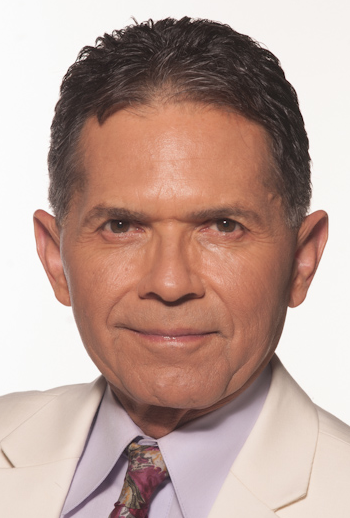Editor’s note: Amigos805 welcomes local guest columns, letters to the editor and other submissions from our readers. All opinions expressed in submitted material are those of the author and do not necessarily represent the viewpoint of Amigos805.
By David Magallanes • Guest contributor

David Magallanes
Death has always been a part of life, and therefore a part of music.
Mexicans tend to have a healthy relationship with death. It’s woven into the dominant religion, Roman Catholicism, which is blended with an indigenous culture that has always been comfortable with the natural cycles of birth, maturation, senescence and death.
It should not be a surprise, then, that those of us from Mexican families naturally embrace death in our songs and celebrate it with a mix of joy and grief every beginning of November. El Día de los Muertos (The Day of the Dead) is a day to connect with our parents and grandparents who have moved past this life, as well as with ancestors whom we don’t even know, but who have determined our circumstances, at least initially. Traditional Mexican songs about death, such as La Calaca and La Catrina, as well as those contributions by the iconic Mexican singers, such as Vicente Fernandez and José Alfredo Jimenez as two outstanding examples, sustain our living relationship with death.
What brought me to this subject in June—quite far from November!—was a recent article in the Ventura County Star about a recent music festival in Ventura that features music popular with much of today’s youth: punk rock, pop punk, hip-hop, metalcore and other genres that didn’t even exist when I was young. Subgenres, well off the beaten path, were also represented. One of them is known as “deathcore.” I was laden with curiosity and had to find out more about this.
No, this style of music is not the joyous acceptance of death with nostalgic affection for our ancestors that many of us in the Mexican culture grew up with. It’s guttural and caustic—literally! A quick search on YouTube introduced me to the deathcore band Pure Core and one of their songs, “Drown In Sulphur—An Epilogue to the Arrogant.”
This band is obviously popular and successful to some extent, but needless to say, I’m a bit more comfortable, shall we say, with songs about wanting to die for a lost love, or to honor the spirits of death that are so familiar to us in the Mexican culture!
— David Magallanes is a writer, speaker and professor of mathematics.
***
La Música y la Muerte
Por David Magallanes • Columnista invitado
La muerte siempre ha sido parte de la vida y, por lo tanto, parte de la música.
Los mexicanos tienden a tener una relación sana con la muerte. Está entretejido con la religión dominante, el catolicismo romano, que se mezcla con una cultura indígena que siempre se ha sentido cómoda con los ciclos naturales del nacimiento, la maduración, la senescencia y la muerte.
No debería ser una sorpresa, entonces, que nosotros que provenimos de familias mexicanas abrazamos naturalmente la muerte en nuestras canciones y la celebramos con una mezcla de alegría y dolor cada principio de noviembre. El Día de los Muertos es un día para conectarnos con nuestros padres y abuelos quienes se han desaparecido de esta vida, así como con los antepasados ??que ni siquiera conocemos, pero que han determinado nuestras circunstancias, al menos inicialmente. Las canciones mexicanas tradicionales sobre la muerte, como La Calaca y La Catrina, así como las contribuciones de los cantantes emblemáticos mexicanos, tal como Vicente Fernández y José Alfredo Jiménez, como dos ejemplos sobresalientes, mantienen nuestra relación entre la vida y la muerte.
Lo que me trajo a este tema en junio—¡bastante lejos de noviembre!—fue un artículo reciente en el periódico el Ventura County Star sobre un reciente festival de música en Ventura que presenta música popular entre la juventud actual: punk rock, pop punk, hip-hop, metalcore y otros géneros que ni siquiera existían en mi juventud. Los subgéneros, bien fuera de lo común, también fueron representados. Uno de ellos se conoce como “deathcore”. Esto me llenó de curiosidad y tenía que averiguar más sobre esto.
No, este estilo de música no es la feliz aceptación de la muerte con un afecto nostálgico por nuestros antepasados ??con el que muchos en la cultura mexicana hemos crecido. ¡Es gutural y cáustico—¡literalmente! Una búsqueda rápida en YouTube me introdujo al conjunto “deathcore” Pure Core y su canción, “Drown In Sulphur—An Epilogue to the Arrogant” (“Ahógate en Azufre—Un Epílogo a la Arrogancia”).
Obviamente este conjunto es, al menos hasta cierto punto, popular y exitoso, pero huelga decir que me siento un poquito más cómodo, por decirlo así, con las canciones sobre el deseo de morir por un amor perdido, ¡o para honrar a los espíritus de la muerte que nos son tan familiares en la cultura mexicana!
— David Magallanes es un escritor, orador y profesor de matemáticas.
Editor’s note: Amigos805 welcomes comments on stories appearing in Amigos805 and on issues impacting the community. Comments must relate directly to stories published in Amigos805, no spam please. We reserve the right to remove or edit comments. Full name, city required. Contact information (telephone, email) will not be published. Please send your comments directly to frank@amigos805.com
